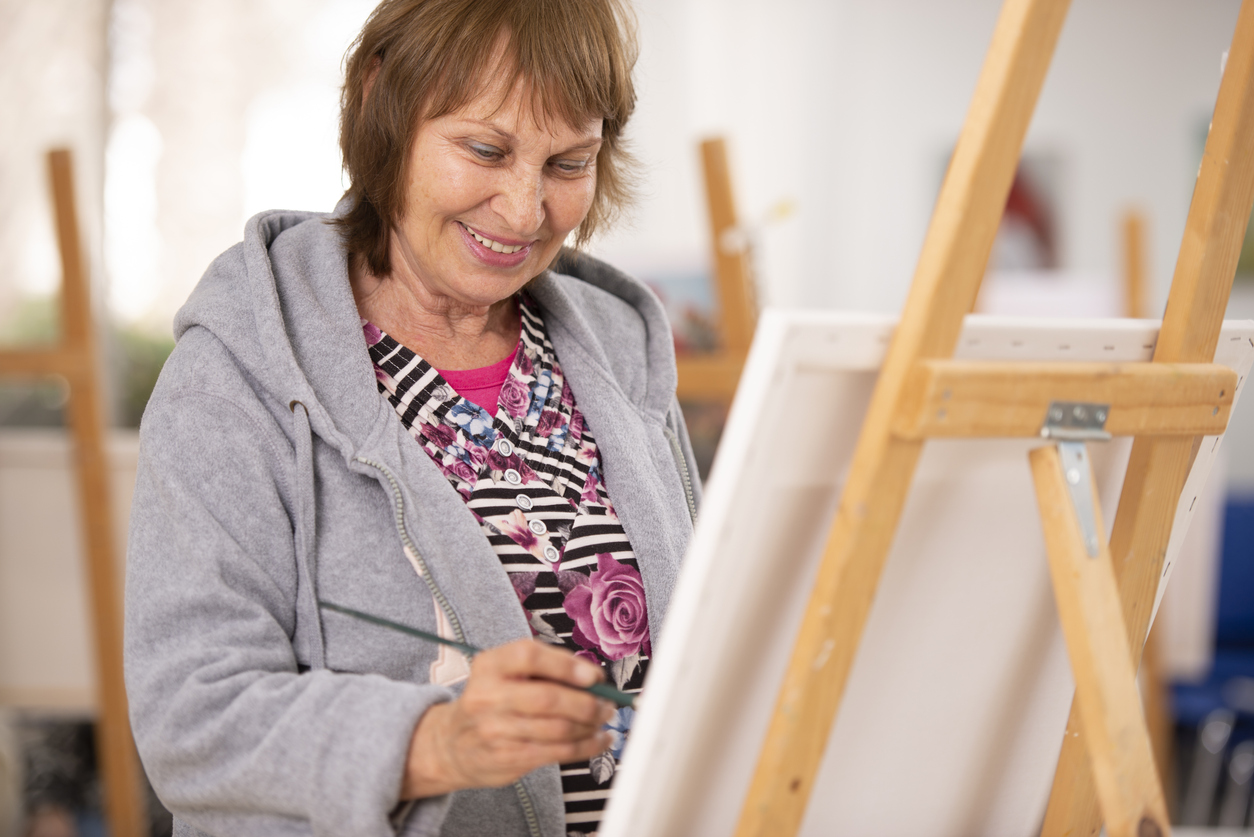For many of us, creating art is an enjoyable pastime. Whether you are drawing in a sketchbook, colouring in an adult colouring book, taking a pottery class, or painting your favourite landscape, there are so many ways that we can incorporate art into our daily activities. Regardless of your artistic ability, creating art can be an enjoyable and relaxing way to spend your day.
Aside from being a fun hobby, there is a growing body of research demonstrating the positive impact art can have on our physical and mental health and well-being. A 2006 study led by geriatric psychiatrist Gene D. Cohen of George Washington University found that older adults who participated in arts programs had better physical health, fewer doctor visits, improved morale, and decreased loneliness and depression.
When exploring the link between art and its impact on our health, it is important to note the distinction between the act of creating art and professional art therapy. The Canadian Art Therapy Association describes art therapy as a combination of the creative process and psychotherapy, facilitating self-exploration and understanding. They state that imagery, colour and shape can be used to express thoughts and feelings that would otherwise be difficult to articulate. Art therapy is facilitated by a trained art therapist with expertise in counseling psychology and fine arts.
While art as a means of self-expression can be traced back to cave paintings thousands of years ago, the modern practice of art therapy did not begin until the 1940s. The discipline continued to evolve over time, with many hospitals and mental health facilities implementing art therapy programs by the middle of the 20th century.
Art therapy can be used to help individuals recover and heal from mental illness, trauma, substance abuse and more. Through creating art and exploring its meaning, people can express emotions in a constructive way, process complex feelings, increase their self-confidence, and build new relationships.
A 2010 review published in the American Journal of Public Health found positive outcomes in using art to promote healing and enhance health and wellness. The review suggests that creative engagement can decrease anxiety, stress, and mood disturbances; and likely contributes to many aspects of physiological and psychological conditions associated with improved health.
In addition to the benefits of creating art, research demonstrates health benefits to viewing art as well. A 2017 study published in the International Journal of Qualitative Studies on Health and Well-being found that art displayed in hospital settings positively impacts feelings of safety, comfort, and personal identity in patients.
Art programming is a key component of Victoria Hospital’s Mental Health program and consists of creative art, art therapy, and music. Creative art is self-directed and designed to help patients build confidence and self-esteem, promote creative expression and skill building, encourage socialization, introduce new leisure opportunities, and to encourage meditation.
Some patients participate in a weekly art group where participants can engage with a variety of different art forms and discuss the therapeutic benefits of art, such as coping with life stressors in a healthy way or healthy self-expression. Patients are given resources which identify art opportunities that fit their needs within the community. These patients also have access to a keyboard piano, guitar and CD players. They periodically participate in groups that explore music and its potential therapeutic benefits.
Victoria Hospital Foundation is currently making plans to support the mental health recovery of patients through enhancements to our hospital’s art program.
Consider taking some time for yourself to pursue a new art project. Whether you are an experienced artist or just starting out, take the opportunity to explore your creativity and express yourself through your art.
This article is meant to be informational in nature and should not replace the advice of a trained healthcare professional.



